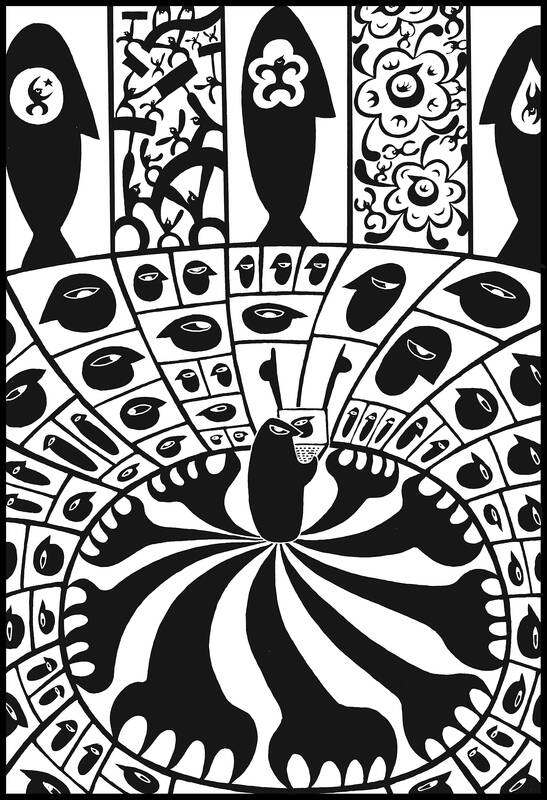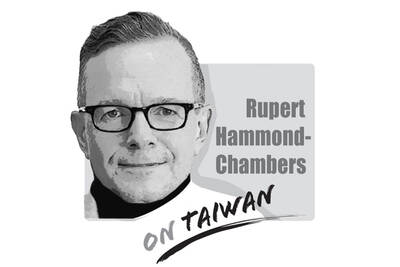Indonesia has not suffered a major terrorist attack in more than two years, but this calm is deceptive. The threat has shifted online, making it harder to detect and potentially more insidious.
This is not an isolated problem. The Islamic State group used online radicalization and recruitment to draw fighters to Syria and Iraq, extending its influence to the Sahel and Afghanistan, but recently the digital terror threat is becoming more urgent in Southeast Asia.
Singapore’s latest security assessment warns of a worrying trend of individuals being exposed to extremist groups on social media. Physical training camps or sermons are no longer necessary for the ideology to spread, raising the risk of homegrown attacks and complicating counterterrorism efforts.

Illustration: Mountain People
Indonesia and the Philippines remain among some of the most affected by terrorism in the region, along with Myanmar and Thailand, according to the Global Terrorism Index 2025. Jakarta and Manila’s scores improved, but their governments cannot afford to ignore future threats. Radicalization, recruitment and financing are moving into the digital space, making for a far more challenging enemy.
Southeast Asia’s demographics make it particularly vulnerable. Several nations have among the world’s largest populations of young people. With widespread smartphone access and high social media penetration, children and teenagers are especially exposed. Ignoring this means a new generation could get radicalized well before adulthood.
Still, there are reasons to be cautiously optimistic. Indonesian officials have lauded what has been dubbed a “zero attack” phenomenon since 2023. Last year, Jemaah Islamiyah, once the region’s most feared terrorist group and responsible for the 2002 Bali bombings, said it was formally disbanding. In the Philippines, the partial decommissioning of the armed wing of the Moro Islamic Liberation Front is encouraging, notwithstanding recent concerns over tensions in the group.
These successes should not mean complacency. Israel’s war in Gaza and the sense of injustice it fuels around the Muslim world is feeding extremist narratives. Online platforms provide ample space for these messages to spread, often beyond the realm of conventional policing.
Funding shortfalls also increase vulnerabilities. Earlier this year, Indonesian President Prabowo Subianto’s administration announced a budget cut to several agencies, including the Indonesian National Counterterrorism Agency. This risks underfunding the institutions vital for detecting future threats.
Indonesia’s next generation of extremists is being groomed digitally. In May, police in South Sulawesi arrested an 18-year-old for spreading Islamic State propaganda online and threatening bomb attacks on social media. Last year, authorities blocked more than 180,000 online posts linked to intolerance, radicalism, extremism and terrorism originating from radical groups.
The most chilling trend is the targeting of children. Authorities say extremist groups linked to the Islamic State are luring minors as young as 12 through digital channels, often without parents and teachers realizing until it is too late. In Central Java, a young boy joined an Islamic State-linked terror group after being radicalized virtually.
These extremist groups are also exploiting Southeast Asia’s booming digital economy. Online gaming, projected to reach US$15.21 billion by 2033, remains underregulated, making it easier for anonymous fundraising, money laundering and illicit transfers.
Indonesia’s counterterrorism strategies have been successful. At one point, the world’s most populous Muslim nation was considered a haven of terror by US officials worried about al-Qaeda using it as a base, but after the Bali bombings killed more than 200 people, Densus 88, the nation’s elite counterterrorism unit, cracked down. It dismantled terror networks — sometimes brutally — and forced militants into deradicalization programs.
These methods need to evolve for the modern era.
Indonesia “risks facing a new and more complex wave of radicalization,” said Muhammad Makmun Rasyid, a member of the Bureau for the Prevention of Extremism and Terrorism, at the Indonesian Council of Ulama.
Modern militancy cannot be policed solely by security agencies. It requires a whole-of-society response. Protecting young people will need early detection and education, not punishment. Indonesia’s counterterrorism agency has begun strengthening community-level prevention, but more training for teachers, parents and religious leaders is vital.
Regional coordination must also deepen. Extremist networks often exploit policy gaps between nations. Countries are already working together to stem terror financing and improve intelligence sharing, but efforts remain fragmented. Cybercooperation between the 10 ASEAN members is growing, but the bloc lacks formal mechanisms that could help law enforcement. Real-time intelligence sharing has made progress, but it is not seamless.
Indonesia and its neighbors have shown they can dismantle terror groups, but the absence of bombs does not mean the absence of danger.
Karishma Vaswani is a Bloomberg Opinion columnist covering Asia politics with a special focus on China. Previously, she was the BBC’s lead Asia presenter, and worked for the BBC across Asia and South Asia for two decades. This column reflects the personal views of the author and does not necessarily reflect the opinion of the editorial board or Bloomberg LP and its owners.

In the past month, two important developments are poised to equip Taiwan with expanded capabilities to play foreign policy offense in an age where Taiwan’s diplomatic space is seriously constricted by a hegemonic Beijing. Taiwan Foreign Minister Lin Chia-lung (林佳龍) led a delegation of Taiwan and US companies to the Philippines to promote trilateral economic cooperation between the three countries. Additionally, in the past two weeks, Taiwan has placed chip export controls on South Africa in an escalating standoff over the placing of its diplomatic mission in Pretoria, causing the South Africans to pause and ask for consultations to resolve
An altercation involving a 73-year-old woman and a younger person broke out on a Taipei MRT train last week, with videos of the incident going viral online, sparking wide discussions about the controversial priority seats and social norms. In the video, the elderly woman, surnamed Tseng (曾), approached a passenger in a priority seat and demanded that she get up, and after she refused, she swung her bag, hitting her on the knees and calves several times. In return, the commuter asked a nearby passenger to hold her bag, stood up and kicked Tseng, causing her to fall backward and
In December 1937, Japanese troops captured Nanjing and unleashed one of the darkest chapters of the 20th century. Over six weeks, hundreds of thousands were slaughtered and women were raped on a scale that still defies comprehension. Across Asia, the Japanese occupation left deep scars. Singapore, Malaya, the Philippines and much of China endured terror, forced labor and massacres. My own grandfather was tortured by the Japanese in Singapore. His wife, traumatized beyond recovery, lived the rest of her life in silence and breakdown. These stories are real, not abstract history. Here is the irony: Mao Zedong (毛澤東) himself once told visiting
When I reminded my 83-year-old mother on Wednesday that it was the 76th anniversary of the founding of the People’s Republic of China, she replied: “Yes, it was the day when my family was broken.” That answer captures the paradox of modern China. To most Chinese in mainland China, Oct. 1 is a day of pride — a celebration of national strength, prosperity and global stature. However, on a deeper level, it is also a reminder to many of the families shattered, the freedoms extinguished and the lives sacrificed on the road here. Seventy-six years ago, Chinese Communist leader Mao Zedong (毛澤東)